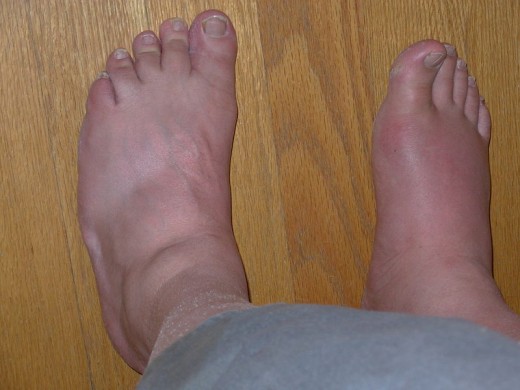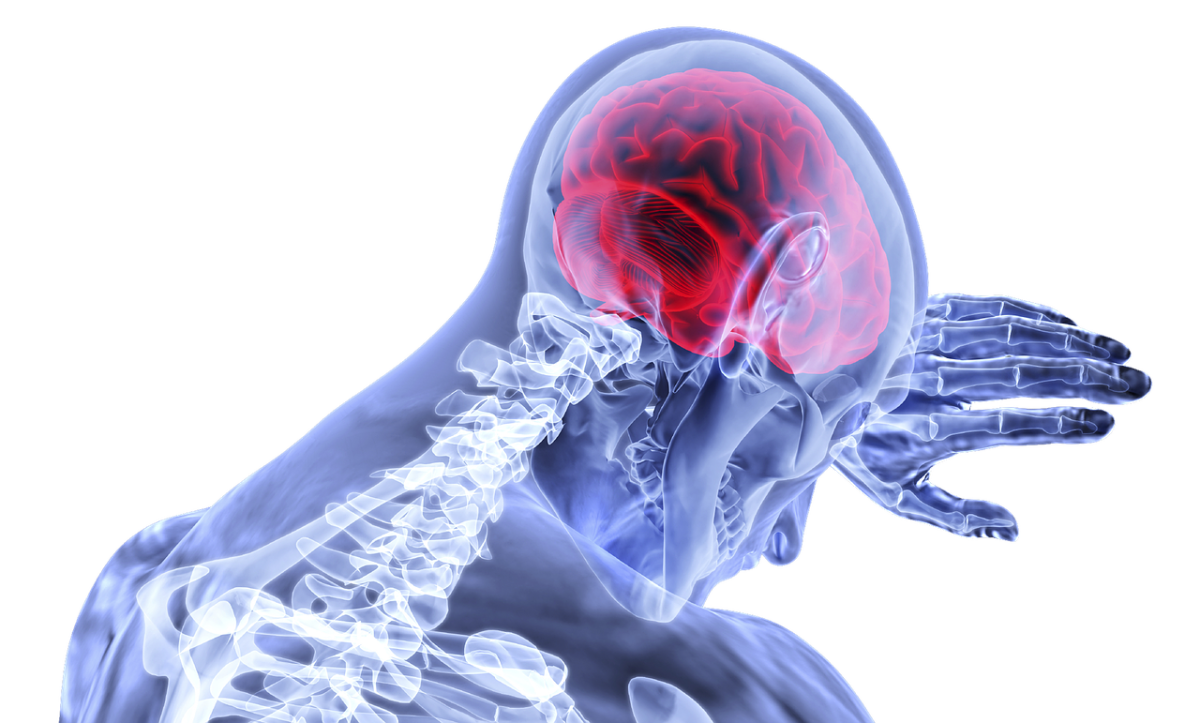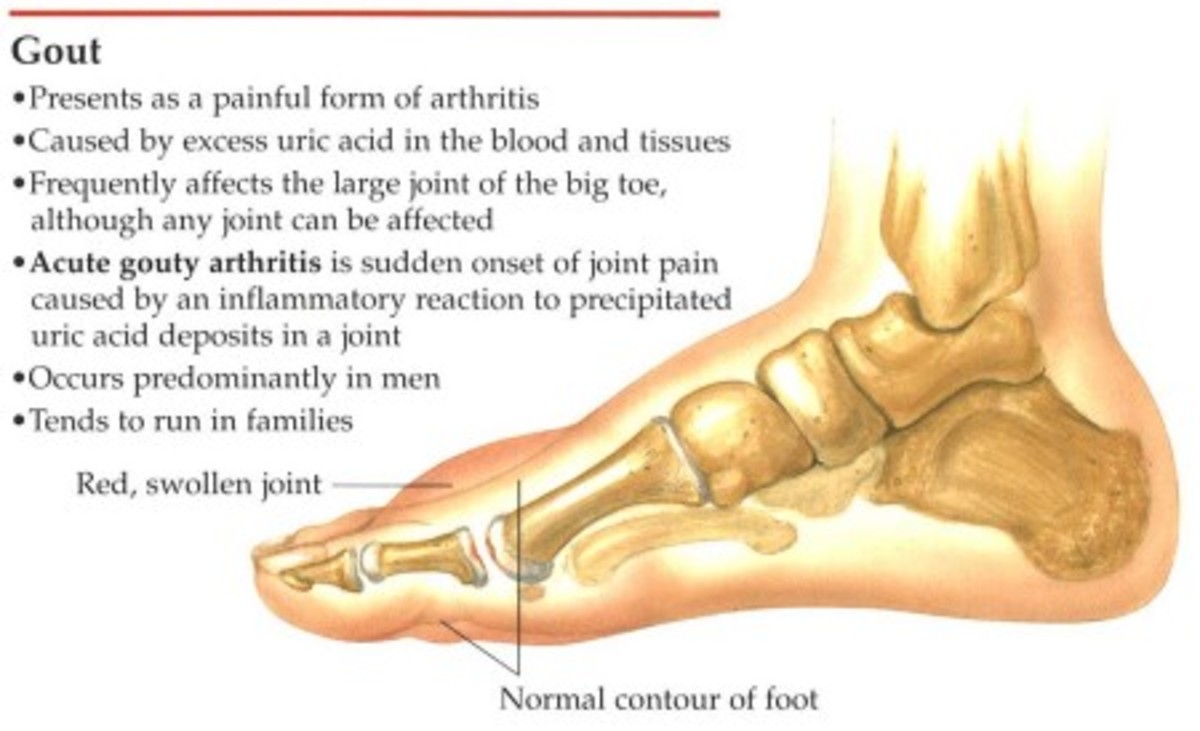Why Do We Experience Different Kinds Of Physical Pain?

Aches and pains of all kinds!
"Pain is such an uncomfortable feeling that even a tiny amount of it is enough to ruin every enjoyment."
Will Rogers (1879-1935) American humorist and actor.
When it comes to experiencing pain, we all have a story to tell. We can for example remember vividly the worse pain we've ever had. In describing pain we will also use various adjectives and degrees of what we felt. However, no two people tend to feel or suffer pain in quite the same way.
Pain is a very complex subject in the way we feel pain and how the body generates it. In addition there are different types as well as degrees of discomfort. Depending on how severe and what causes the pain, analgesia (pain relief) needs to be chosen with some thought.
Why is pain so complicated?
To understand this we'll look at the basic definitions of pain and then how it is generated in the body. We will then look at the different types of pain and the medications best suited for each one.
Factors that affect pain
Factors that may increase pain
| Factors that may decrease pain
|
|---|---|
1. Insomnia, fatigue
| 1. Sleep
|
2. Anxiety, fear
| 2. Relaxation
|
3. Depression
| 3. Elevation of mood
|
4. Social isolation
| 4. Companionship, understanding
|
5. Discomfort
| 5. Relief of other symptoms
|

What is pain?
Firstly we need to recognise that pain is a symptom not a condition in itself. Therefore, to alleviate the pain, it is the ailment or injury that needs to be remedied if possible.
The Medical Free Dictionary gives a nice simple definition of pain:
"An unpleasant sensation occurring in varying degrees of severity as a consequence of injury, disease, or emotional disorder."
In addition to the physical aspects of pain, the dictionary also includes 'emotional disorder'. This is not as strange as it may seem. Stress and anxiety don't only cause physical pain, but can make any discomfort already present worse.
However, pain is also a safety alert. It alerts us to the fact that something within our body is not right. As a simple example, when we touch something hot, the intense pain is immediate and makes us draw away to avoid further damage.
How does the body produce the sensation of pain?
How can the body tell the difference between a gentle touch of a snowflake on your skin and the sharp nail you've just stood on? Basically, sensory nerves detect various degrees of pressure and touch. In addition we have specialised sensory pain nerves called nociceptors that are activated whenever potential or actual injury to the body occurs. These nerves, in a split second, will send messages to your brain.
However, as fast as this response is, the body has an even quicker response route that is located in the spinal cord. The area called the dorsal horn can make decisions that doesn't require the brain to process it. In this location are the reflex action responses. If for example, you touch something hot, pulling your hand away is a reflex action that has been sent from the spinal cord.
In addition though, the signals still travel onto the brain. This is where the pain response becomes more complex. The signal travels to an area of the brain called the thalamus. The thalamus will send the signals to different areas of the brain for further analysis and interpretation. If you ever wonder why you sometimes shout out or cry when you feel pain, this is because pain signals are also sent to the limbic system in the brain. This area is basically the emotional centre.
If your hand touched something hot and the injury finally healed then you would no longer experience pain - this is called acute pain that is short term. However, if other complications such as infection, ulceration or some other damage had occurred the pain signals would continue to be stimulated and the person begins to suffer chronic pain. Chronic pain is felt when the body tissues or systems continue to be damaged by an injury or other condition.
These wonderful pain systems are also unique since no two people will experience the same kind of pain in exactly the same way. This could be caused by a number of things such as how many pain receptors you have or are fired, how sensitive your pain receptors are, how you cope with pain and many other factors.
Relaxation for back pain
Pain facts
Chest pain facts
|
|---|
Did you know that chest pain can be the cause of many conditions, not just a heart attack? Because of the complex nerve system in the body, chest pain could originate from another area. For example problems with the internal organs other than the heart can cause chest pain. In addition, chest pain may also be due to problems with the oesophagus, bones or muscles.
|
Different sensations and experiences of pain
As mentioned before there are different kinds of pain, some descriptions we use are:
- throbbing
- aching
- stabbing
- shooting
- hot/burning
- nippy
- gripping
- stinging
- crushing
- nagging
- gnawing
There are many more adjectives that we use, but the above are some of the most common. In addition, we might also experience one or more of the types of pain above at the same time along with other feelings such as - nausea, sweating, feeling dizzy and so on.
Depending on what the cause of your pain is, think about what kind of pain relief would be best suited for it. There are three main types of pain relief that can be bought over the counter:
- NSAIDS (non-steroidal anti-inflammatory - ibuprofen is the best example).
- Paracetamol/tylenol
- Opioids - these are often mixed with other drugs such as paracetamol & codeine to produce medicines such as 'co-codamol'. The drug is called 'co-codamol' in the UK and will go under another name depending on what country you are in. Codeine in particular is not very good as a pain killer when taken on its own, it works much better combined with another substance such as paracetamol.
- Other drugs. Doctors may prescribe medicine for pain that you wouldn't think would work in this way, but they do. For example a doctor may prescribe drugs usually used for epilepsy or depression to use as pain relief. Nerve pain in particular seems to be soothed very well with these alternative drugs. However, they can't be bought over the counter and need to be prescribed.
Below are some tips from both NHS UK and the British Pain Society about the best pain relief for certain kinds of pain:
- Ibuprofen is best used for conditions that are known to be inflammatory such as arthritis, sprains or other injury. In addition, many women get good pain relief for their monthly period by taking ibuprofen instead of another form of pain killer. Another area where ibuprofen may be beneficial is with tension headaches.
- Paracetamol/Tylenol - general pains - example flu, slight headache, achy joints. Paracetamol is also good for relieving a fever. However, paracetamol/tylenol is usually not that good for pain associated with nerve conditions such as sciatica.
- Opioids, depending on their strength, can be used for anything from back pain to terminal cancer. Unless its the very mild form of opiate such as codeine, then these drugs must be prescribed. Most of them are also addictive. For severe and chronic pain, people will often have an individualised drug regime written up. However, because we all experience pain differently and at varying levels of severity, it can take a while to get the right mix of medicine to take away extreme pain. There is always the issue as well with chronic pain of experiencing break through pain. This kind of pain comes on suddenly, is usually very severe and is not alleviated by the normal pain relief the person takes. Usually with chronic pain, illness and disease, the drug regime will incorporate another drug into it to cover for break through pain.
Causes of certain kinds of pain
Condition
| Reason for pain
|
|---|---|
1. Crushing pain in heart attack or angina
| This is due to the lack of oxygen getting through to the heart.
|
2. Strains or sprains - often described as stabbing, sharp, gripping pains
| This is due to damage to the muscles, tendons and ligaments.
|
3. Infection pain - hot, throbbing, nagging, aching
| This is normally caused due to the swelling around the area that presses on nerves and other structures. The pain is also caused by damage to the tissues.
|
4. Nerve conditions such as sciatica, back pain - some people have described - numbness, sharp, shooting, hot, pins and needles,gripping
| This is due to the pressure or damage to the nerve and also where the nerve is being constantly irritated or rubbed, especially if it is trapped or due to swelling.
|


Test your knowledge on pain
view quiz statisticsSelf help tips to relieve pain
To finish off this article, below are self help tips that you can do in addition to taking pain relief. These steps are recommended by the National Health Service (NHS) UK, Patient Choices.
Lastly, if you are in pain and medication you are taking does not relieve it, then speak to either a pharmacist or doctor who will be able to advise you on not only what pain relief to take, but taking it appropriately in order to maximise the benefits.
Self Help Tips
- Gentle Exercise - activities such as swimming, walking, some forms of dance and even a little gardening can help to ease off pain by blocking pain signals to the brain. In addition, gentle movement prevents and releases stiffness and tension in muscles, ligaments and joints. Naturally if you are concerned about doing damage to yourself then check with your doctor first. However, most gentle exercises when built up at a comfortable pace doesn't cause any harm and has many beneficial effects.
- Relaxation Techniques - Your doctor or therapist should know quite a few techniques that can be used for people who are in pain. Relaxation not only helps you to cope better with pain, it also eases discomfort, promoting better sleep and positive thinking.
- Breathing properly - particularly with intense pain, the tendency is to take shallow and rapid breaths. This can make the pain worse by creating tension and stress. Try to concentrate on your breathing, slow it down and take as deep a breath as you can. On the out breath, try to relax as much as possible.
- Stay Positive - pain can makes us feel poor in other ways not just the unpleasant sensation of the pain itself. You can also feel depressed, tired, anxious, irritable and tense. All these factors do make pain feel that much worse. Living with constant pain isn't easy but by trying to keep focused, continuing with your daily routines and interests as far as you are able to, does help you to cope with pain much better.
- Sharing your story - the old saying 'a problem shared is a problem halved' is a very true one and this includes pain. There are hundreds of excellent forums where people are just waiting to hear what you have to say and to give you support back. Hub Pages is also a great site for telling your story in article form. Don't worry if you have never written before, many people on the site haven't either. What is assured is that the community here will give you support and encouragement not only in your writing and sharing your story, but coping with your pain as well.
- Socialising - if you were a person who socialised a lot before you started experiencing pain, then try to continue this as much as you can. Being with friends and family is often a great distraction from pain.
In addition, if you have any problems or issues with pain relief - especially medication that has been prescribed by your doctor - don't be afraid to go back and discuss issues with them, especially if you feel the pain relief is not doing as well as you had hoped. You get no bonus points in this life for suffering in silence. It's your right to be as pain free as possible.









